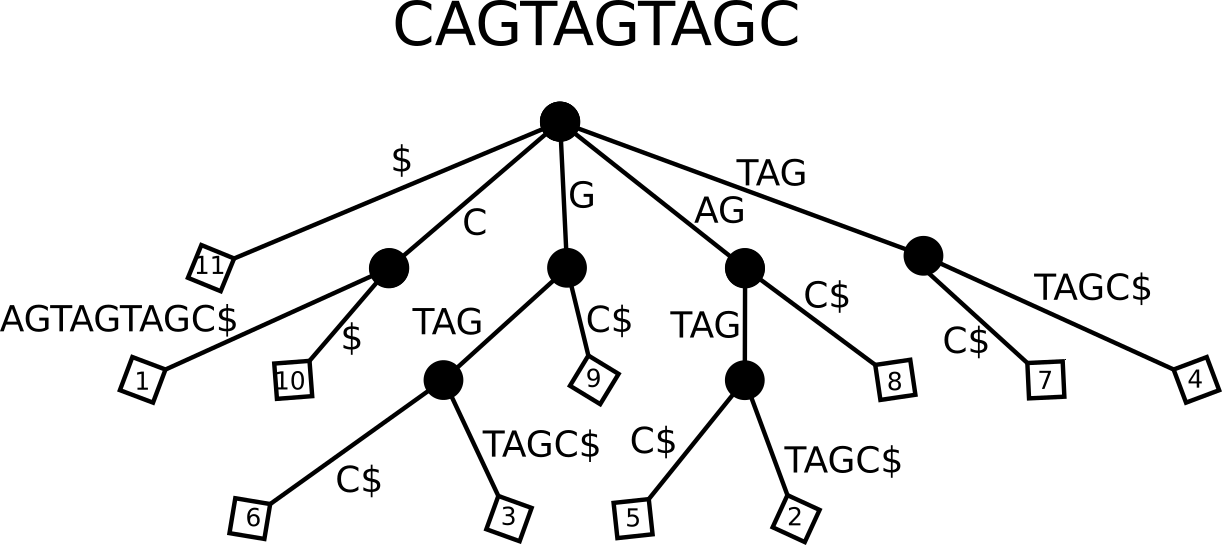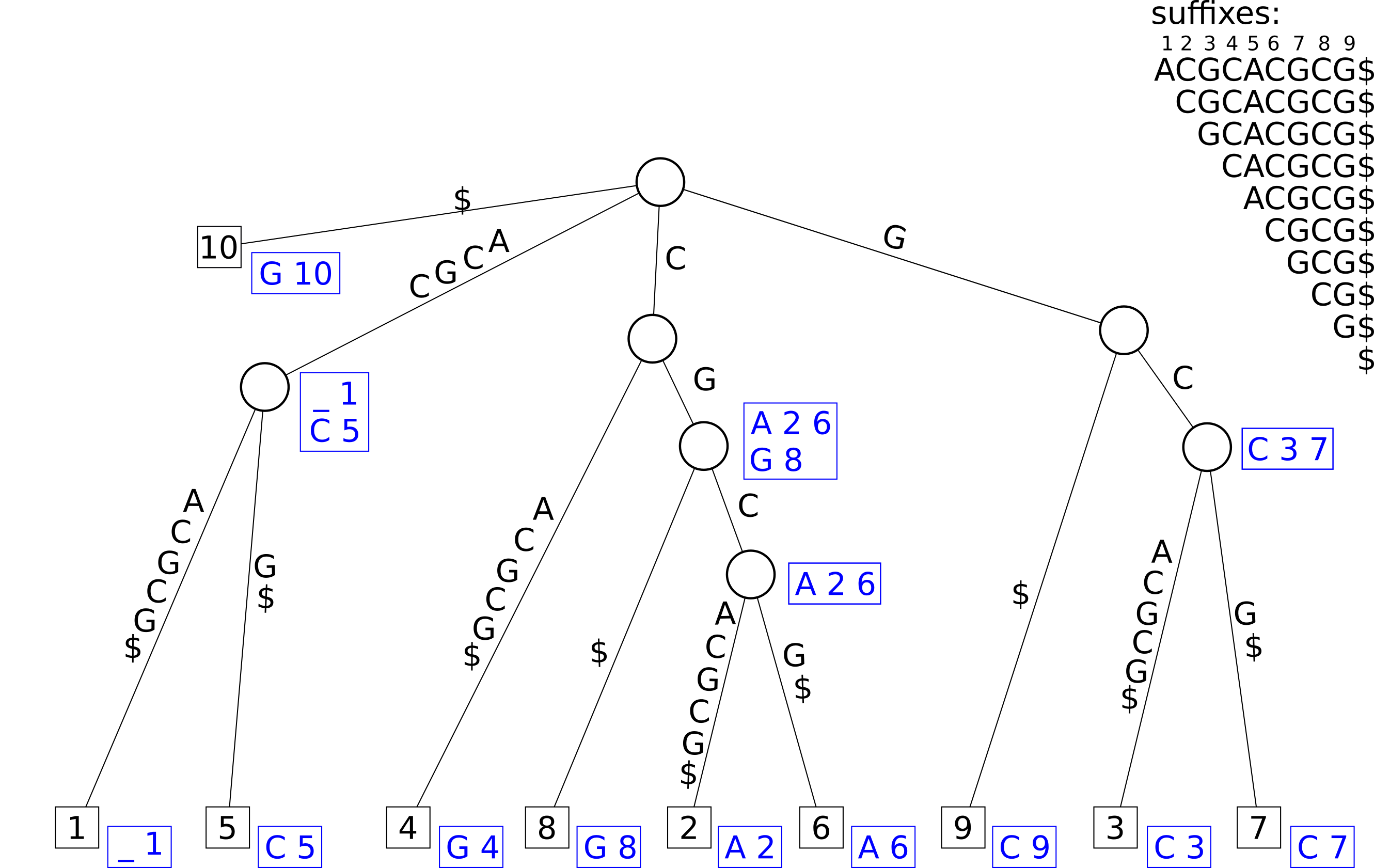Exercise sheet 9: Suffix-Trees
Exercise 1
You are given the text T=CAGTAGTAGC.
1a)
Draw the corresponding suffix tree!
Hide
Solution

1b)
Describe the steps of a counting query for \(P =\) TAG.
Hide
Solution
- start at root node
- locate outgoing edge that starts with \(T\)
- match subsequent characters of the pattern
- in the subtree rooted at TAG count the number of leaves \(\Rightarrow 2\)
1c)
Describe the steps of a reporting query for \(P =\) AG.
Hide
Solution
- start at root node
- locate outgoing edge that start with \(A\)
- match subsequent characters of the pattern
- in the subtree rooted at AG report the labels of all leaves \(\Rightarrow \{2, 5, 8\}\)
Exercise 2
2a)
Draw a generalized suffix tree for the sequences \(A=\)CCATG and \(B=\) CATG.
Hide
Hint 1
Concatenate the two sequences using a unique character for splitting.
e.g. CCATG#CATG$.
Dont forget to include suffix links!
Formulae
\(sl(v) = w\)
\(\overline{v} = cb\)
\(\overline{w} = b\)
\(c: character, b: string\)
remember: \(\overline{v}\) denotes the concatenation of all path labels from the root to v.
Solution

2b)
Find the Maximal Unique Matches of the sequences \(A=\)CCATG and \(B=\)CATG using the tree from
A).
Hide
Solution
CATG is the only MUM as \(\overline{v} =\) CATG has no
suffix links pointing to it
Exercise 3
3a)
Draw a generalized suffix tree for the sequence \(A=\)ACGCACGCG.
Hide
Solution

3b)
Find all maximal pairs of length at least 2.
Hide
Solution
ACGC: \((1,5,4)\)
CG: \((2,8,2),
(6,8,2)\)
3c)
Why is C: \((2, 8, 1)\)
not a maximal pair?
Hide
Solution
It is not right maximal. This can be seen since CG:
\((2, 8, 2)\) already includes the
indices 2 and 8 with a longer match.